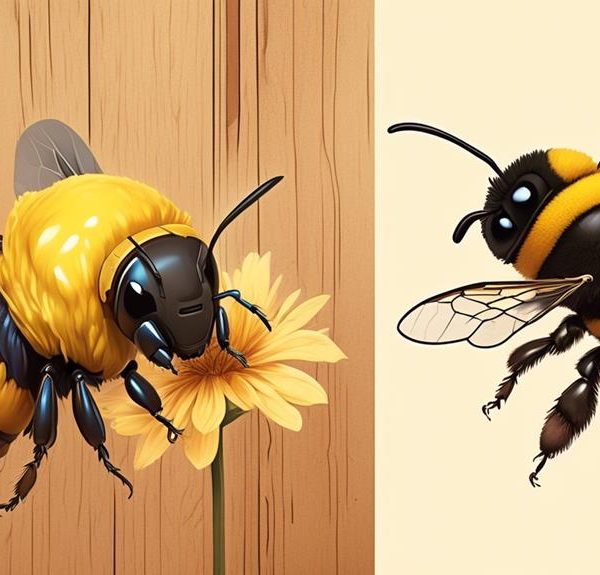Discover the surprising bait that can turn the tide in your carpenter bee infestation; a must-read for every homeowner!

What Bait Do You Use in a Carpenter Bee Trap
As the saying goes, you catch more flies with honey than with vinegar, but what about when your target is a carpenter bee?
Choosing the right bait for your carpenter bee trap is crucial if you're to turn the tide in your battle against these wood-boring pests. We'll explore the various options you have, from commercially available baits to DIY concoctions, and provide you with the knowledge to make an informed decision.
But, there's one bait in particular that might surprise you with its effectiveness.
Key Takeaways
- Carpenter bees are attracted to fresh wood, sugar water, and citrus scents as bait for traps.
- DIY carpenter bee traps can be made using untreated softwood, citrus or almond essential oil, and a visually attractive container.
- Regular maintenance of the carpenter bee trap, including clearing out dead bees and reapplying bait, is important for its effectiveness.
- Different types of traps, such as wooden box traps, bottle traps, and sticky traps, can be used to capture carpenter bees.
Understanding Carpenter Bee Behavior
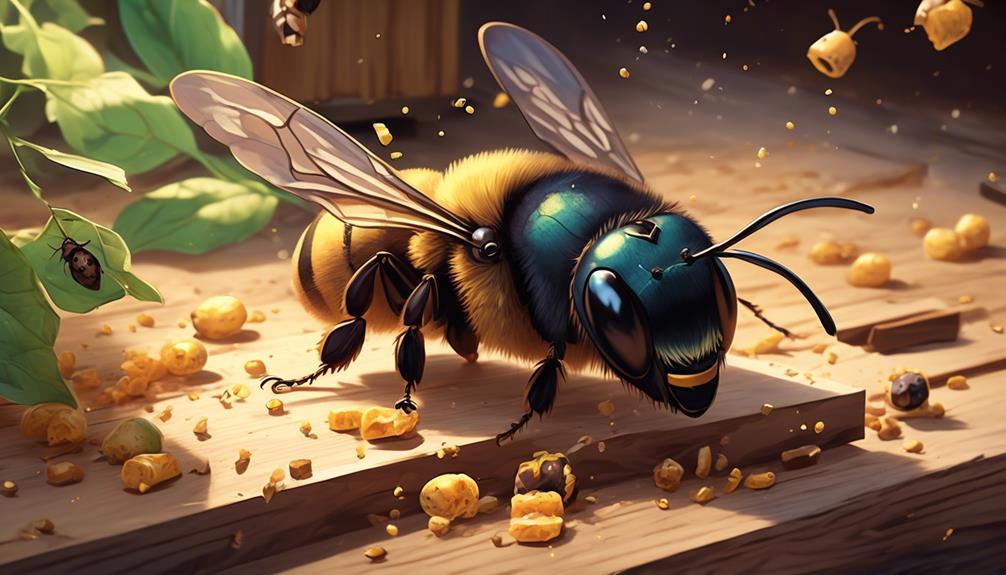
To effectively bait a carpenter bee trap, it's crucial to understand their behavior first. Carpenter bees, scientifically known as Xylocopa, are solitary insects that display unique nesting habits. Unlike their honey bee counterparts, they burrow into weathered, unpainted wood to establish their nests.
Carpenter bees are primarily attracted to softwoods, including pine, cedar, redwood, and cypress. They're generally active during daylight hours, as they're diurnal creatures. They're also known for their aggressive territoriality, especially male carpenter bees, which, despite their intimidating behavior, lack a stinger.
Understanding their dietary habits is equally important. Carpenter bees, being pollinators, are drawn to nectar and pollen. However, they're infamous for their 'nectar robbing' behavior, where they cut a hole in the side of a flower to access the nectar without aiding in pollination.
In baiting traps, it's essential to remember that carpenter bees aren't social creatures. They don't communicate with each other about food sources like honey bees do. Therefore, the bait strategy should focus more on exploiting their nesting and territorial habits than their feeding preferences.
Types of Effective Bee Traps
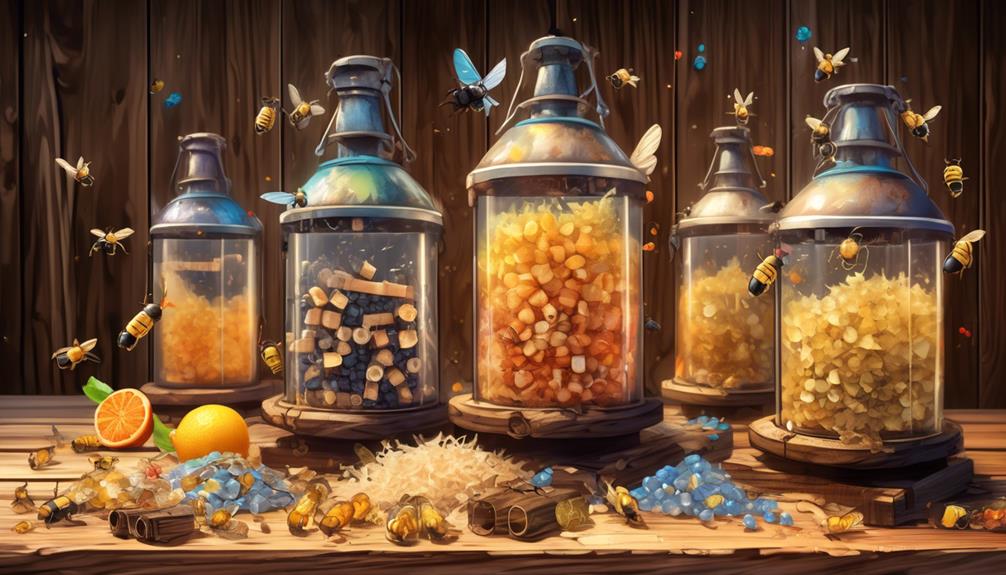
Given your grasp of carpenter bee behavior, you're now better equipped to choose and utilize effective bee traps, which come in various types designed to exploit the insects' nesting and territorial tendencies.
One popular type is the wooden box trap. This trap mimics the natural nesting sites of carpenter bees, enticing them to enter the small holes drilled into the wood. Once inside, they're funneled into a clear collection container where they can't escape.
Another effective option is the bottle trap. This trap uses a plastic bottle filled with sweet liquid as bait, attracting the bees with its scent. The bees are then trapped when they fly into the bottle's narrow opening, unable to find their way out.
A third type is the sticky trap. These traps use a strong adhesive to capture bees that land on their surface. They're often combined with visual cues, like yellow or blue coloring, known to be attractive to carpenter bees.
Most Successful Carpenter Bee Baits
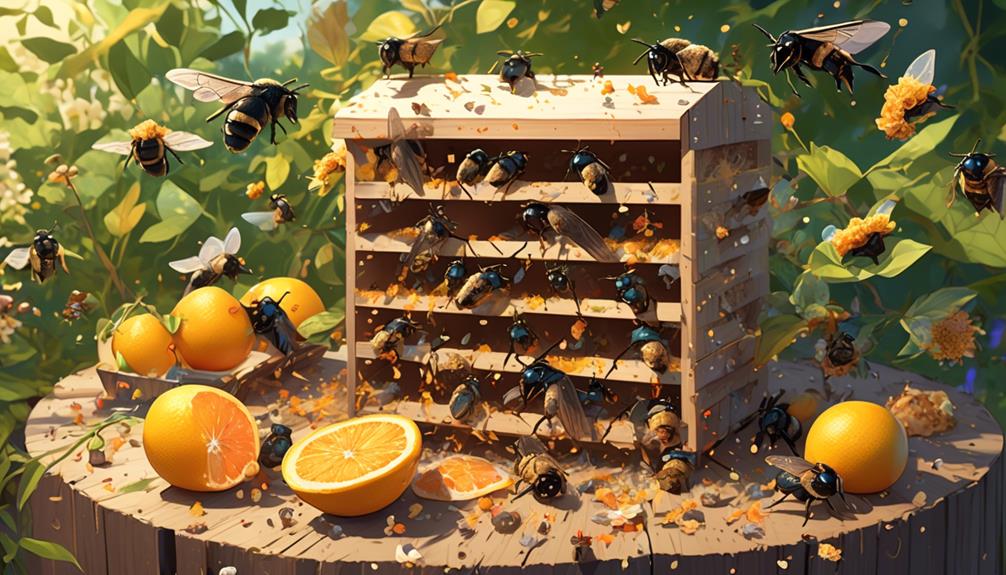
Often, the most successful baits for carpenter bee traps are those that mimic their natural food sources or nesting materials. Carpenter bees are enticed by the scent of fresh wood and certain sweet-smelling substances, like sugar water, which mimic the nectar they feed on.
Here's a quick rundown of some of the most successful baits:
Bait Type | Why It Works |
|---|---|
Fresh Wood | Carpenter bees are attracted to untreated, soft wood which they bore into to nest. |
Sugar Water | It mimics nectar, a primary food source for carpenter bees. |
Citrus Scents | Citrus oil acts as an effective lure due to its sweet, floral scent. |
You can experiment with these baits to determine which works best for you. However, remember that bait alone won't necessarily solve your carpenter bee problem. Using bait in conjunction with other strategies, such as sealing off existing holes, can increase your success rate. Also, remember to replace your bait regularly to maintain its effectiveness.
DIY Carpenter Bee Trap Bait
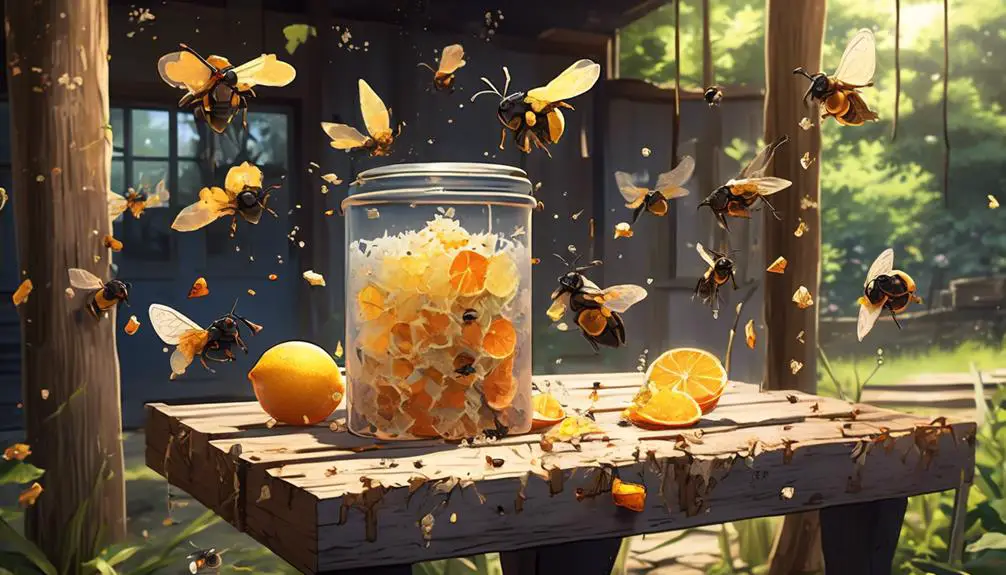
If you're looking to create your own effective carpenter bee trap bait, there are a few simple, yet scientifically-backed methods you can try.
Carpenter bees are attracted to untreated, softwood such as pine, cedar, or fir, so consider using these as your trap's base.
You can enhance the attraction by applying a few drops of citrus or almond essential oil. Research shows that these scents mimic the pheromones of female carpenter bees, luring males to the trap. However, be mindful to use them sparingly as excessive amounts can deter bees.
You might also consider using a visual attractor, like a yellow or white container. Bees are attracted to these lighter hues.
Lastly, don't forget the importance of location. Carpenter bees prefer areas with sunlight and structures that provide shelter. Place your trap in such spots to increase its effectiveness.
Maintaining Your Carpenter Bee Trap
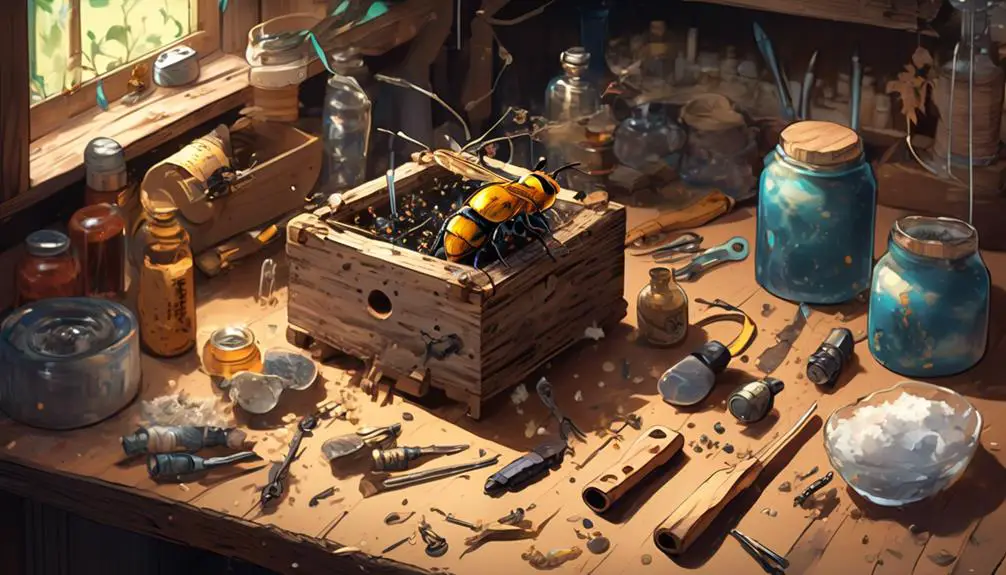
Once you've set up your carpenter bee trap with the right bait and location, it's crucial to regularly maintain it to ensure its ongoing effectiveness. This involves routine inspections and cleaning procedures.
Inspect your trap at least every few days. Be on the lookout for signs of wear, damage, or blockage. Carpenter bees are adept at creating secondary exits, so it's important to ascertain that the trap's integrity remains intact.
You'll also need to clear out the trap regularly. Dead bees can block the entrance, deterring others from entering. Carefully remove the dead bees using gloves or tweezers. Don't forget to check the bait too. If it's depleted or no longer fresh, replace it promptly.
Cleaning your trap is another key maintenance task. Over time, residue can accumulate, impairing the trap's effectiveness. Use a mild detergent and warm water to clean the interior and exterior of the trap, ensuring to rinse thoroughly and dry before reusing.
Lastly, remember to reapply the bait frequently, especially after cleaning. This will ensure your trap remains attractive to the carpenter bees. Regular maintenance not only prolongs the life of your trap but significantly boosts its efficiency, too.
Conclusion
So, you've learned about carpenter bee behavior, explored various bee traps, and discovered the most effective baits.
You've even mastered DIY baiting techniques.
But remember, maintaining your trap is crucial. Keep it clean and replace the bait regularly.
With the right knowledge and diligence, you can protect your wooden structures from these wood-boring insects.
Don't forget, studying these fascinating creatures can also enhance your understanding of nature's intricate ecosystem.

